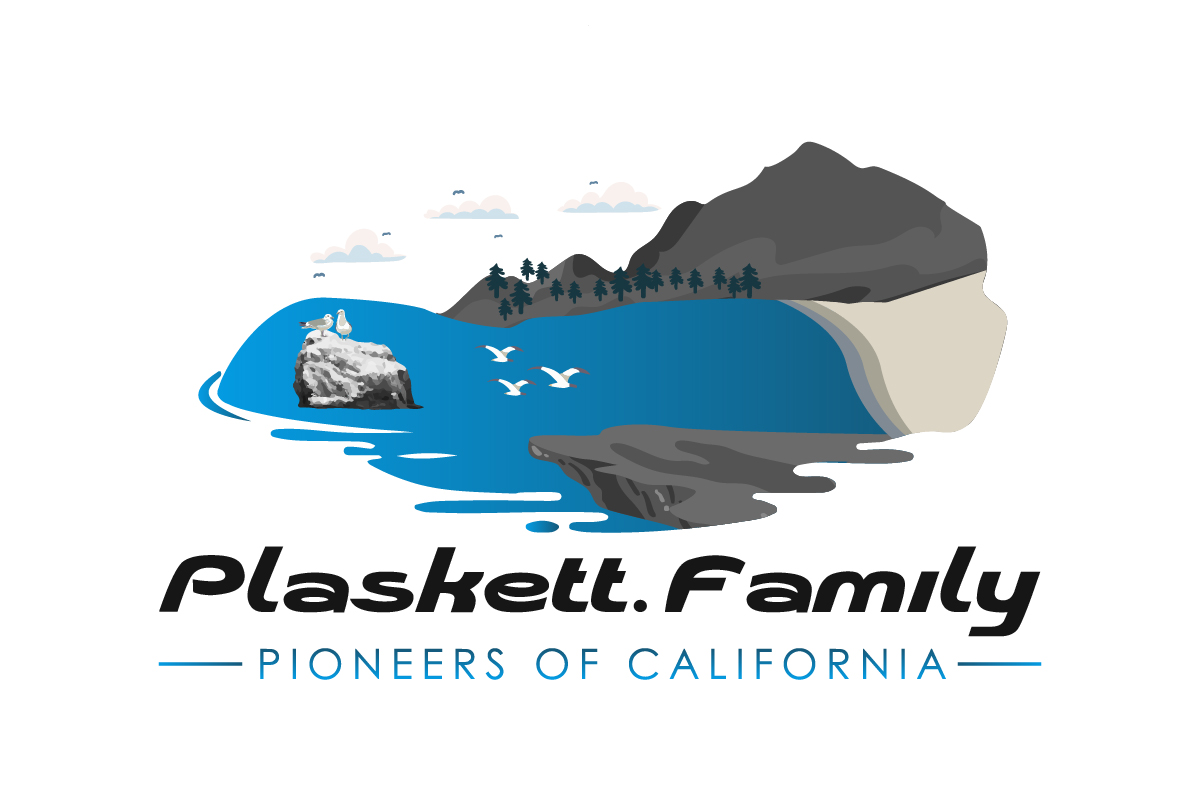By Mabel Plaskett
At this time of year may be seen along the coast one of the most memorable migrations of nature. Starting in October the California Gray Whales leave their summer home in the Bering Sea for the long trip south to their breeding and calving grounds in the warm lagoons of Baja California.
The Gray Whale was once almost extinct but they are now protected and are rapidly increasing. Now as many as 7,000 of these great mammals make the long trip south every winter. They travel 14,000 miles, taking six to eight months for the round trip.
From December to February is the peak of their migration and during this period one can see from 10 to 20 great whales at once swimming close in shore off our Monterey County coast.
GOING SOUTH, they swim close to shore but even when sighted far out to sea, they are visible as they come up to blow (breathe). They are, like man, an air breathing animal and although they swim most of the time under water they must come up for air every few minutes, usually five to seven and never more than 10 minutes. The huge mammal comes to the surface and spouts its warm breath through nostrils on the top of its head. The warm breath of the whale over the cold water condenses into a mist. After breathing deeply several times the whale dives back several hundred feet into the sea and swims under water until he needs to breathe again.
Although they do not come in as close to shore on the return trip in the spring, one can often see them with the tiny spout of the baby whale following the big one of the mother.
There are among the largest mammals in the world, weighing forty tons and measuring 50 feet in length. Of course the Great Blue Whale is the largest living thing, weighing as much as 100 tons and attaining a length of 100 feet. The killer whale is the terror of the sea. He will attack and kill with his knife-like teeth ever a great blue whale.
OUR GRAY WHALE is friendly and has great intelligence. Samuel Dutton Lynch in his story, “San Diego Whale Hunt” tells us “There are scientists, such as Dave Browne, curator of mammals at Marineland of the Pacific, who believes that whales (at least certain species) may be next to man the most intelligent of living things—surpassing even dogs and apes!
“Whales have long been known to have extra-ordinary intelligence,” Lynch continued, “but until Marineland of the Pacific recently captured several pilot whales, little was known about their actual mental processes. Marineland whales have demonstrated not only uncanny ability to learn astounding facts, but they are revealing true inventive and reasoning processes. Furthermore in the past year it has been notes that the Marineland whales appear to talk to each other in a language consisting of vocalized sounds. Someday man may be able to learn their language and converse with whales!”
Astonishing as this sounds one never knows. The Gray Whale is toothless, getting its diet of small sea life strained through layers of whale bone in its mouth.
Many years ago a huge, dead whale, 60-feet long, washed up on a small beach just north of Willow Creek. All of the families secured quantities of whale oil by boiling down the fat. This was used for oiling riatas and boots and all leather goods, and for making soap. To this day this beach is called “Whale Beach.”
JUST A FEW years back a dead whale washed in near Monterey and was towed out to sea by the coast guard, As it floated along it caught in a heavy mass of kelp and a sea heron stayed on its back for several days. A flurry of excitement was created along the coast. Some were sure it was a submarine, others thought it was a capsized row boat. Finally the heron left its back and the seaweed loosened its hold and the dead whale drifted in on San Dollar Beach. Thus the mystery was solved and for quite a while the unsavory smell make Sand Dollar a most unpopular place. The skull bone of this whale may e seen at Gorda Service Station.
Ambergris is a by-product of whales. A wax like fatty substance originating in the digestive tract of the sperm whale, it is found in the tropical seas floating in masses. It is of great value and is used in the manufacture of perfume.
In early days, whaling stations flourished along the coast, one at Monterey and one at San Simeon. The whaling industry waned with the lessened demand for whale bone with the substitution of steel, and of other oils for whale oil. Of course, the whale meat is still a main source of food for the Eskimos.
So we look out our windows here on the coast and as we see a gray whale hump its great back and flip its enormous tail as it dives and watch for it to emerge to spout, we think of “Moby Dick” and say “Thar she blows!”
Mabel Sans Plaskett was born in Coralitas near Ben Lomond in the Santa Cruz Mountain area of California. Her father Edward Robert Sans ran a saw mill near Pacific Valley, along the Nacimiento - Ferguson road to the coast at Highway One. It was there she met Edward Abbott Plaskett, her husband. Mabel wrote about the coast and the pioneers of the 19th and 20th Centuries.

Recent Comments